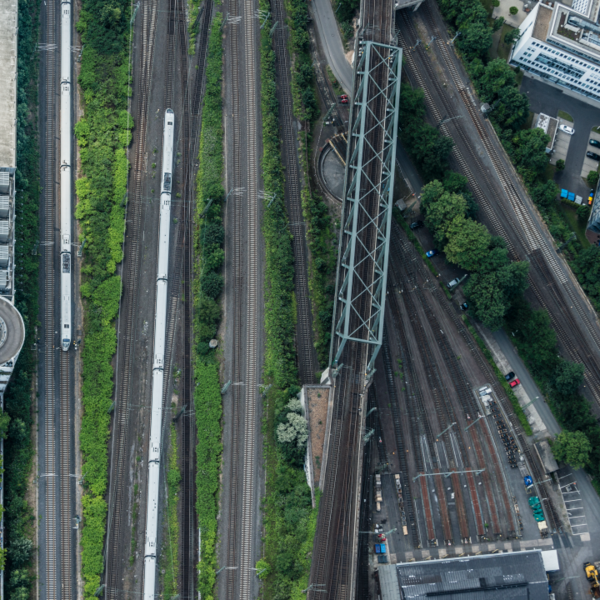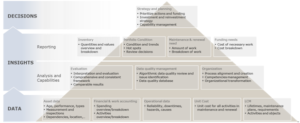Blog
Railways have a key role in a sustainable society
Hermann Orth
19 May 2022

The railways have a key role in a sustainable society. Beyond the more obvious benefits of achieving an efficient and low-carbon transportation system, a sustainable railway requires infrastructure operators to apply long-term thinking to their strategic asset management. Railway infrastructure is along-term business, with asset lifetimes ranging up to decades, or even more than 100 years for engineering structures. What has been built will need to be managed, maintained, operated und ultimately renewed for many years, requiring comprehensive management across these aspects:
- Understand the timing and quantity of maintenance and renewal activities the portfolio
requires,considering - ageing and changes in traffic, both now and in the future,
- Estimate the cost to execute these necessary activities
- Understand the requirements in staffing, skills, and production capabilities this entails
- Integrate these into an asset management strategy including a funding plan, sourcing strategy, and
necessary organisational development
While this may seem obvious, the challenge lies in integrating all relevant factors, planning accordingly and being able to execute with foresight – possibly more so than in other industries. Three examples shall illustrate this:
- Railways are some of the biggest buyers for certain types of goods and services, with market-making traits. Highly adverse effects can result if the impactful position of railways are forgotten.A European country saw decades of neglect of maintenance funding for engineering structures. Following severalhigh-profile closures,a sudden reversal was made and a programme to remedy the situation was initiated. The starved construction industry, however, had downsized. With the sudden upturn, supply and demand became unbalanced and prices skyrocketed, while the industry still struggled to provide capacity. The earlier neglect of maintenance resulted in delays, price increases, and long lead times for actual improvements.
- In another case, outsourcing maintenance work on railway infrastructure had been planned, as is increasingly popular. To effectively manage such schemes over time periods compatible with the longevity of assets, a very good understanding of quality KPIs and their development along withexpected amounts of executed maintenance are needed to provide guidance to contractors, as well as properly control them. Without this in place, there is a high risk for maintenance to be cost-optimised towards the end of a contract term instead of asset life cycles.
- In most countries, railway infrastructure funding is ultimately public funding. Transparency, reliable plans, as well as the ability to clearly articulate and argue needs are necessities to responsibly use public funds. Cost drivers, be it e.g., ageing, traffic, or regulations, need to be identifiable and their impact on funding needs be shown.In return, how funding will be used, respectively what the effects of funding cuts will be (condition deterioration, delays, follow-up cost) need to be taken into account and articulated in a tangible manner.The introduction of quantitative, end-to-end transparent and comprehensive frameworks has aided an infrastructure manager to significantly increase government funding for renewal and maintenance.
These cases show different uses, respectively requirements, of strategic asset management. To manage these effectively, fully integrated and data-driven methods are necessary. On a high level such frameworks need to cover three levels
- Data – quality, availability, and integration of data are key enablers for any data driven activity.
- Insights– methods, metrics, and procedures to ensure that data is managed proactively and analyses aiding asset management can be conducted. This comprises analytical functions, but also enablers such as organisation culture, skills and interpretation frameworks that turn highly specific information into generic insights that can be interpreted, compared, and aggregated across different asset types. Strategic level KPIs need to report on e.g. condition and forecasting of work needs and accordingly cost.
- Decisions – with the data in place and the insights analysed, strategic decisions can be based on a highly analytical approach and information that can be traced back to individual assets, rather than a high level abstraction or extrapolation.

The strategic asset management model introduces key benefits that are critical to the operation of large asset portfolios in a digitalised and sustainable way.
- End-to-end transparency and traceability from single assets to portfolio level decisions
- Single point of truth – with a common and integrated system, it is ensured that there is only one answer to a given question, and that it is the right one regardless of perspective
- Full integration across functions – the technical and economical realms must not be separate but be two views of the same entity, with cost assignable to specific work and assets
A very specific use case of this model was recently implemented at a European railway infrastructure manager:
A portfolio model on individual assets´sconditionand its long term impacts produces an outlook on remaining asset lifetimes. Together with maintenance blueprints and unit cost data, this information is used to forecast maintenance volumes and cost. This includedalgorithmics for objective, quantitative and consistent reinvestment decision making, providing the basis for financial and work planning, capability management and outsourcing coordination. Transparency and traceability also make the model a logical choice ingovernment negotiationson funding needs – successfully so.
Of course, getting there is not an easy task: Data quality, systems integration, data culture, transparency culture as well as comprehensive asset management thinking are frequent challenges that are not easily overcome. However, experience shows that this is a necessityfor becoming a modern railway infrastructure operator that uses state of the art methods to sustainably manage the railway infrastructure system – ultimately a key enabler of societal sustainability goals.
Category: Blog
Tags:
About the author

Hermann Orth is an expert in railway infrastructure asset management and funding as well as strategic service planning. He can draw from a long experience in consulting and research gained through supporting numerous clients across Europe. His background is in civil engineering, with a PhD in transportation.